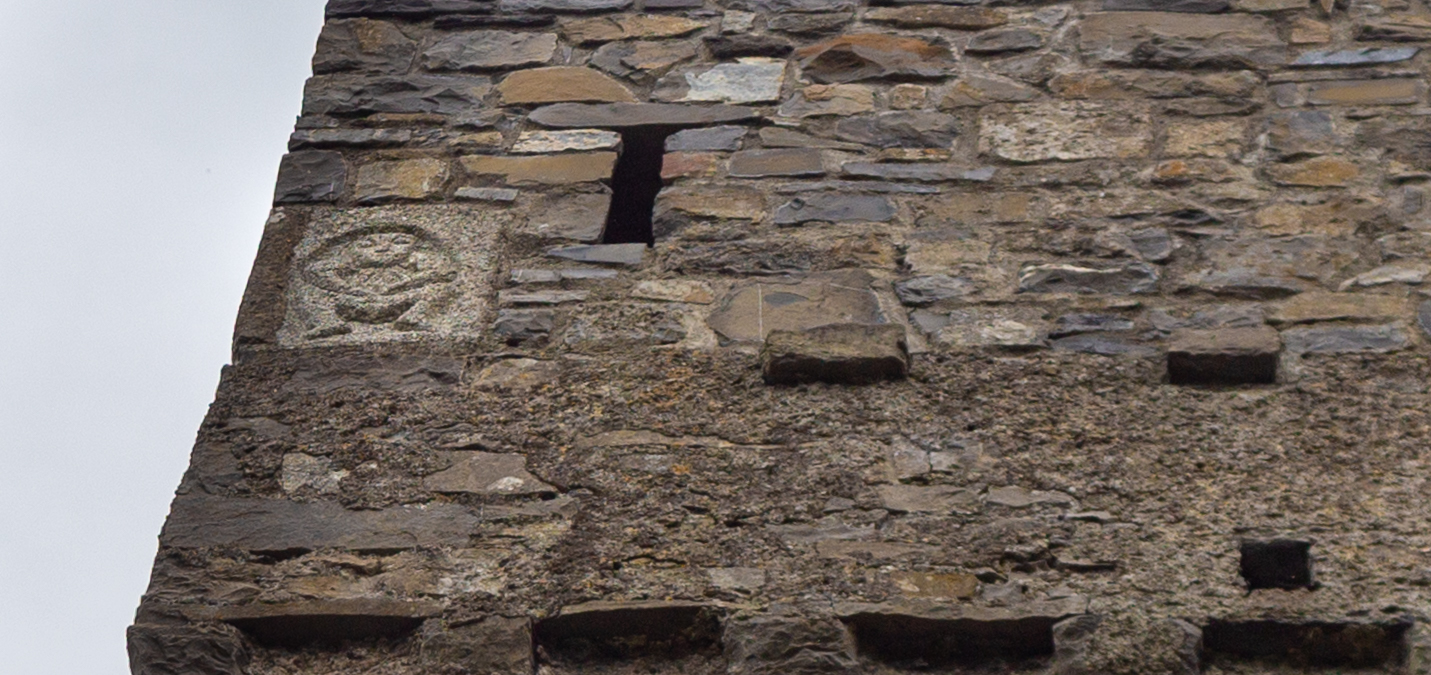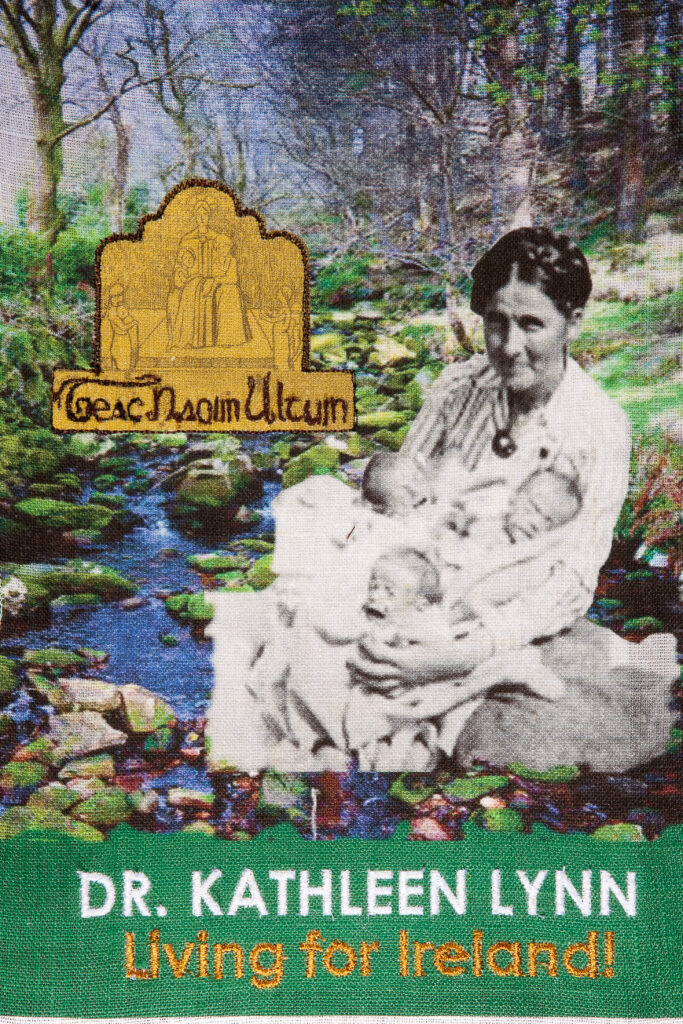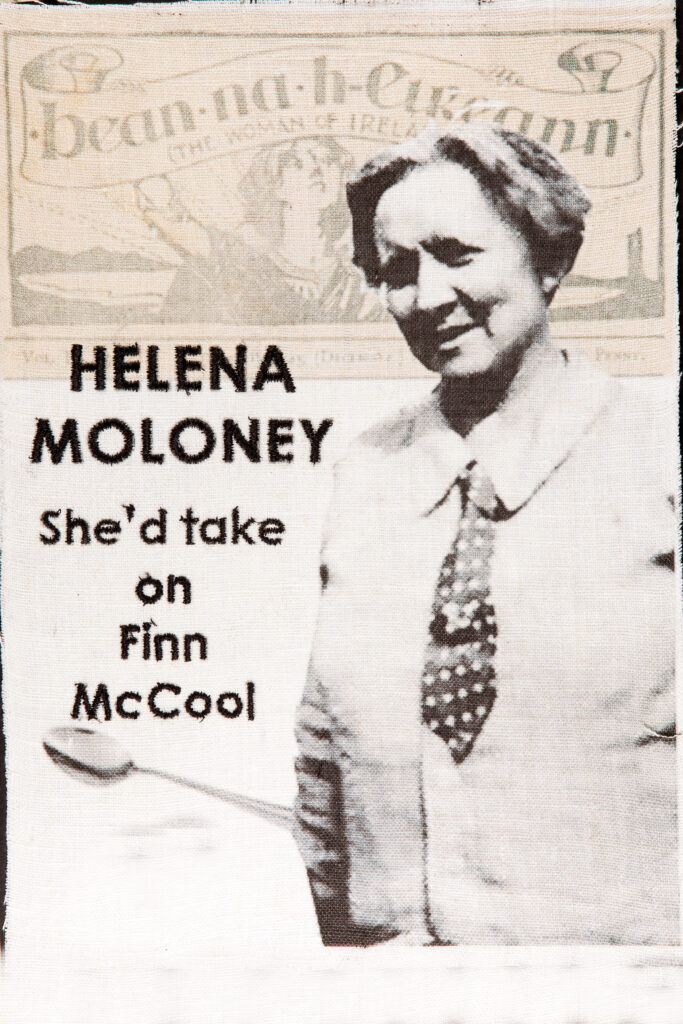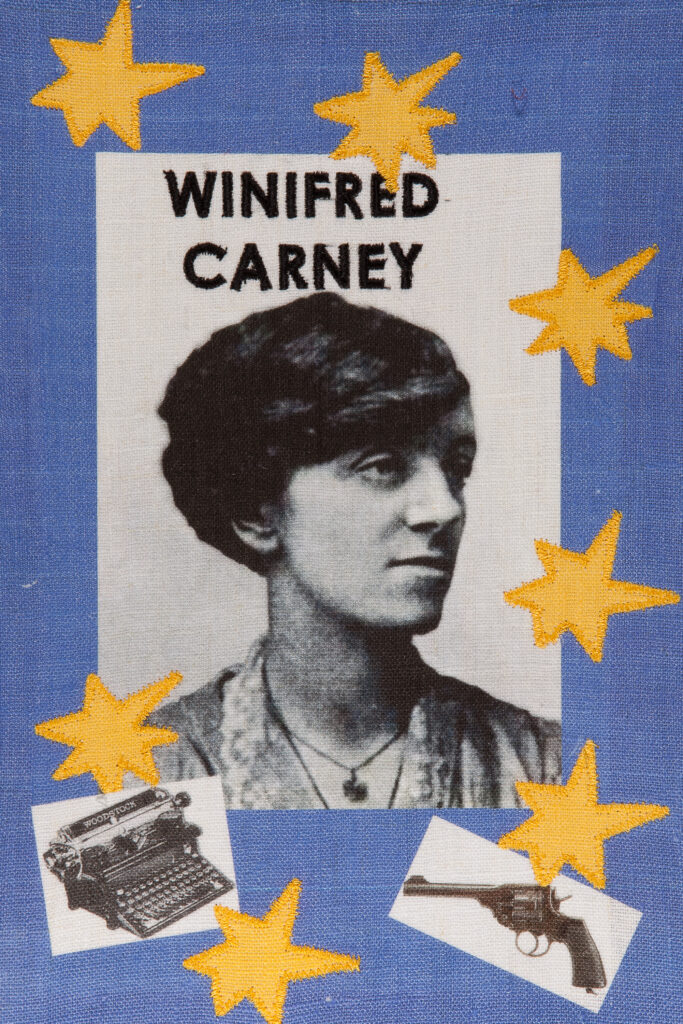Day One: 77 Women and a fake Sheela Na Gig
Our trip begins with a u-turn and a hard left. Our first stop is a bit of Crumlin history – a fake Sheela at St Mary’s Church. Sinéad and Gill, two Crumlin natives, have never seen the church gate open. But this morning it’s open and the lovely work team are happy to give us an unofficial tour of the church and its grounds.
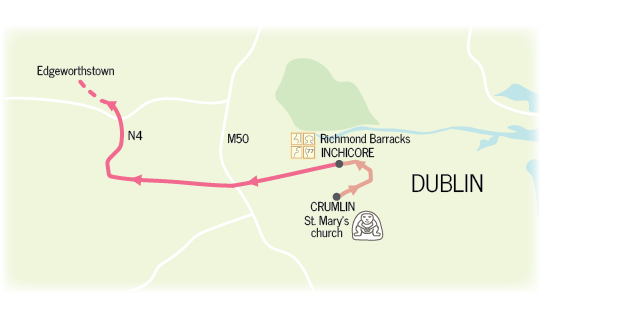
The fake Sheela was carved by 20th century masons who were working on the restoration of the church tower, which dates back to medieval times. No one is entirely sure why but it may be a nod to an earlier, lost Sheela. It’s positioned very high up on the tower and is unfortunately difficult to see. The church itself sits within a circular burial site, suggesting a pre-Christian history. The name Crumlin is possibly derived from Crom Cruach – a pagan king deity (so slightly out of keeping with the theme of the trip). Crumlin Common, just across the road from St Mary’s, was the site of the Fianna’s hurling competitions and is marked with a statue of Cúchulainn (more of him later).
Next we make our way to Richmond Barracks, just up the canal in Inchicore. An apparently unlikely setting for a trip with a very female theme, Richmond Barracks is where the rebels arrested after the 1916 rising were taken. The men’s stories of course we know; the leaders were later taken to Kilmainham Gaol and executed, but what of the women? An exhibition in the barracks seeks to answer that question, featuring the women involved in the Easter Rising and telling, for the most part, their stories for the first time.
The centrepiece of the exhibition is a quilt created by women from the Yarn School, a community-based textile studio in Inchicore. According to the artist who conceived The 77 Women Quilt project, Marja Almqvist, “seventy seven local women were recruited for the project, and each woman was facilitated to design a panel in honour of one of the 77 women held in Richmond Barracks after the Easter Rising.” Some of the panels are artistic, some poetic, some more descriptive, some minimalist, some as gaeilge – each as unique as the women who made them and the women who inspired them. Helena Moloney’s panel (designed by Anne Boyle) reads “she’d take on Finn McCool”.
Apart from the ubiquitous Countess Markiewicz, the names of the other women are unfamiliar. No Dublin streets are named after them. Winifred Carney, we discover, marched with Connolly to the GPO “armed with her typewriter and gun” and was sent to prison in England. A significant number of the women, such as Kathleen Lynn, would today probably identify as queer, as they had relationships with women “companions” or dressed as men. The only woman seriously injured in the rising isn’t actually featured in the exhibition, presumably because she was taken straight to hospital: from where the inimitable Margaret Skinnider escaped. We discover her story later that evening, serendipitously, thanks to a tweet by Sara Sheridan, author of Where are the Women? A hundred years is a long time to wait to hear these stories for the first time.
“Skinnider returned to Dublin at the start of the 1916 Rising and served under the command of Michael Mallin and Countess Markievicz. When Mallin rejected her plan to hurl a bomb from a passing bicycle into the British-occupied Shelbourne Hotel, she argued that as women would be equal with men under the Irish Republic, they had an equal right to risk their lives.”
Extract from Where are the Women? Sara Sheridan (2019)
On our arrival, when we’d told the woman at the desk that we just wanted to pop in to the exhibition to see the quilt, she had very generously let us in without charging us. The condition is a TripAdvisor review which we are more than happy to give. This is to be a feature of our trip. Every day we encounter lovely staff, telling amazing stories and asking in exchange for a review. It becomes a habit to discuss the day and the notes we’ve taken (like the girly swots we are) then co-write a TripAdvisor review for every site we visit.
We hit the road again, taking the M4 West and North. As we pass the Maria Edgeworth roundabout we wonder if Edgeworthstown was named after her, an 18th century writer and feminist. As is too often the case, it was named after her Da.
Bibliography
Dr Mary McAuliffe, a historian and professor of Gender Studies at UCD, has written extensively on the women of 1916:
McAuliffe (2016). Richmond Barracks 1916: “We were there”: 77 women of the Easter Rising. Four Courts Press.
McAuliffe (2020). Margaret Skinnider. Life and Times New Series. UCD Press.
cited in: Hidden histories: Queer Women of the 1916 Rising. Gay Community News (2016)
Sheridan (2019). Where are the Women? Historic Environment Scotland.
The 77 Women Quilt project. The Yarn School

